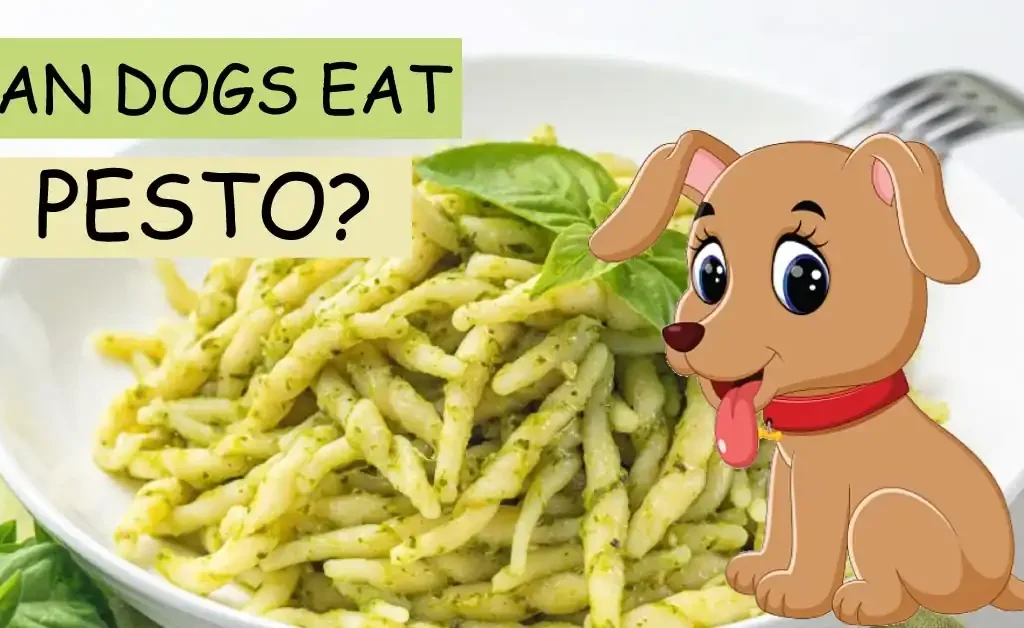Can dogs eat pita bread? Owners who frequently share treats with their devoted canine pals may wonder. Pita bread continually tempts our taste buds with its soft and fluffy texture, and we couldn’t help but wonder if our canine companions may enjoy this delectable treat as well.
We embarked on a voyage into the world of pita bread and canine diets to learn what is safe and suitable for our canine companions. Canines have specific dietary requirements, so what we find delicious may not necessarily be good for them.
Let’s examine the facts, weigh the ramifications, and determine whether pita bread may be a treat occasionally for your dog or if it’s better to save it for your delight. Join us as we explore the convergence of canine and human likes and preferences to make decisions that keep our cherished dogs happy and healthy.
Can Dogs Ingest Pita Bread?
Theoretically, dogs can safely consume tiny portions of plain, unsalted pita bread. Pita bread is comparatively bland and not harmful to dogs by nature. Pita bread should be given to your animal friend in moderation and with caution.
Pita bread is safe, but dogs get little nourishment from it. It is composed chiefly of refined wheat flour, deficient in fiber and vital elements for a healthy canine diet. Overfeeding pita bread might lead to dietary imbalances, weight gain, and digestive problems.
Additionally, many pita breads sold commercially may include extra substances like salt, garlic, onion, or spices that are poisonous to dogs and must be rigorously avoided. These components may cause toxicity, digestive difficulties, or severe health concerns.
If you sometimes treat your dog with a tiny piece of plain roti or pita bread, be sure it doesn’t include any potentially dangerous ingredients, and think about cutting it into bite-sized pieces to avoid choking dangers. To ensure your dog gets the proper nutrients without risks, it’s typically better to give your dog treats made especially for canines.
Possible Health Benefits of Pita Bread for Dogs
Can my dog eat pita bread? Pita bread is not a staple in a dog’s diet but can provide some nutritional advantages in moderation. It’s crucial to remember that these advantages are modest compared to those of other dog-friendly diets. The following are some possible health advantages of pita bread for canines.
1. Carbohydrates
Pita bread’s main ingredient is wheat flour-derived carbs. Your dog can use these carbs as a crucial source of energy. The body needs carbohydrates to fuel physical activity, regulate temperature, and support numerous biological processes.
2. Fibre
Dietary fiber may be present, particularly in whole-grain pita bread. Fiber aids digestion by bulking the stool and encouraging regular bowel motions. It is particularly beneficial for dogs that have digestive problems or are prone to constipation.
3. Source of Protein
A small quantity of protein may be found in pita bread, primarily thanks to the wheat flour. Although dogs largely rely on animal-based protein sources to meet their needs, the protein in pita bread can support the upkeep of muscles and normal bodily function.
4. Little Fat
Pita bread is a good choice for dogs that need to maintain weight or have sensitive stomachs because it is relatively low in fat. Limiting the amount of fat in food can help avoid overeating and lower the risk of digestive distress.
5. Variety
A little slice of basic pita bread might help your dog have more variety in their diet. Dogs who love trying new flavors and textures may welcome variety, which can help reduce food monotony.
6. Hydration
Pita bread includes moisture, much like other bread products. Even though it has a low moisture level, this treat might help your dog stay more hydrated overall.
7. Digestion Ease
Pita bread is often simple to digest for dogs, especially when it is unseasoned and free of chemicals or other potentially harmful components.
8. Promote Dental Health
Pita bread can stimulate the oral cavity in dogs, which may suit their dental health. When people chew, the mechanical movement helps clean plaque and tartar accumulation from their teeth.
Read More: Can Dogs Eat Pizza?
Health Risks of Feeding Pita Bread to Dogs
Can dog eat pita bread? Despite not being intrinsically hazardous, feeding pita to dogs can harm their health if done carelessly and in large quantities. The following list outlines the potential health risks of providing dogs with pita bread.
1. Obesity
Pita bread has a considerable amount of carbs, which, if taken in excess, can result in weight gain. Dogs who are overweight are more likely to suffer from obesity-related illnesses such as joint issues, heart disease, and diabetes.
2. Digestive Problems
Pita bread’s high carbohydrate content can occasionally cause stomach issues in dogs. If the bread is introduced quickly or served significantly, overconsumption may cause diarrhea, flatulence, or stomach pain.
3. Gluten Intolerance
Gluten may be found in wheat flour, a typical component in pita bread. Some canines may be sensitive to or allergic to gluten, resulting in gastrointestinal and dermatological problems. Dogs exposed to gluten may exhibit symptoms including diarrhea, vomiting, itching, or skin rashes.
4. Imbalances in Nutrients
Pita bread is deficient in numerous vital components, like vitamins, minerals, and certain amino acids, that canines require for optimum health. Pita bread can cause nutrient imbalances over time if it replaces nutritionally balanced dog food as a large portion of your dog’s diet.
5. Dental Decay
Pita bread can help with oral stimulation, but there are better ways to care for your teeth. Bread and other starchy meals can cause dog gum disease and tooth decay, especially if dental hygiene is neglected. Dental problems may be avoided by routine dental care, such as cleaning your dog’s teeth or giving him dental treats.
6. Risk Associated with Obesity
Various obesity-related health issues might emerge from obesity brought on by excessive pita bread intake. These might include breathing issues, high blood pressure, arthritis, and heart disease. These ailments can severely influence your dog’s quality of life and necessitate medical attention.
7. Choking Hazard
If pita bread is not split or broken into manageable bits, it might be chewy and represent a choking risk. Always keep an eye on your dog when they are eating pita bread to avoid choking situations and guarantee their safety.
8. Ingredients That Could Be Dangerous
Commercially made pita bread with salt, garlic, onion, or spices could harm dogs. Giving such elements to pita bread might cause serious health problems, including poisoning. Before giving your dog any pita bread, it’s critical to carefully review the contents list and select plain, unseasoned choices.
Can dogs eat hummus and pita bread? Hummus is highly unsafe for dogs, while plain, unseasoned pita bread can be beneficial only in moderation. Ask your vet about your dog’s nutritional demands and serve treats accordingly.
How to Prepare Pita Bread at Home for Dogs?
Making pita bread at home is an easy and healthy method to give dogs a treat that doesn’t include any chemicals or possibly dangerous materials. Here is a basic recipe for handmade pita bread suitable for dogs:
Ingredients
- 2 cups whole wheat or oat flour if your dog has a wheat allergy
- one tablespoon of baking powder
- 0.5 cups of water
- 14 cup low-sodium, unsalted beef or chicken broth
Instructions
- Set your oven’s temperature to 375°F (190°C). Ensure that the oven rack is in the center.
- Baking powder and whole wheat flour (or oat flour) should be combined in a mixing basin.
- Add the water and unsalted beef or chicken broth to the dry ingredients. Combine everything until a dough forms.
- You should change the water amount to ensure proper consistency. The dough shouldn’t be very dry or sticky, but it should be firm.
- When the dough is smooth and elastic, turn it onto a surface lightly dusted with flour.
- Roll out the dough to the appropriate thickness using a rolling pin. You can prepare dog-friendly pita bread slightly thicker than regular, around 1/4 inch (6mm) wide.
- Cut shapes from the rolled-out dough. Your dog may prefer little circles or any other form.
- These pita bread pieces should be baked in the oven for 15 to 20 minutes or until golden brown and firm to the touch.
- Your pita bread’s baking time may vary based on thickness, so watch them to avoid overcooking.
- On a wire rack, let the homemade dog-friendly pita bread cool fully.
- These handmade pita bread treats may occasionally be given to your dog as they have cooled. Any leftovers should be kept fresh by being stored in an airtight container.
Offering your dog pleasant and secure food is easy with these homemade pita bread treats. When selecting materials and flavors for homemade treats, remember to take your dog’s nutritional preferences and any allergies or sensitivities they may have into account.
Considerations While Feeding Dogs Pita Bread
Can dog eat pita bread? Pita bread may be fed to dogs safely if specific safety measures are taken to protect your dog’s health and wellness. Here are some safety measures to consider while giving your dog pita bread.
1. Moderation
Moderation is the key to safely feeding pita to dogs. It shouldn’t be a staple of their diet, just an occasional indulgence. Depending on the size of your dog, keep it to a little slice or two.
2. Unseasoned
Pita bread should always be simple and unsalted for your dog. Avoid any pita bread that has additional components since they can be hazardous to dogs and cause health problems. These substances include garlic, onions, spices, and excessive salt.
3. Managing Portions
Keep meal quantities in mind, especially for smaller dogs. Pita bread overconsumption can cause weight gain and digestive problems. Adjust the portion based on your dog’s size and specific dietary requirements.
4. Consider Allergies and Sensitivities
You are avoiding pita bread altogether or using substitute flours like oat or rice flour, which are less likely to cause allergic responses if your dog has known allergies or sensitivities to wheat or gluten.
5. Observe the Digestive Reaction
After introducing pita bread, pay attention to how your dog reacts gastrointestinally. Some dogs could have delicate digestive systems, and even modest amounts of pita bread might disturb things. Stop feeding pita bread if you see signs of vomiting, diarrhea, or other digestive problems.
6. Dental Treatment
Pita bread can provide some mouth stimulation, but it cannot replace regular dental care. You can maintain their dental hygiene by frequently cleaning your dog’s teeth and providing dental chews or toys that encourage oral health.
7. Prevent Choking Risks
To reduce choking risks, cut or tear pita bread into manageable pieces. To safeguard your dog’s safety while enjoying pita bread, keep an eye on them.
8. Having a Balanced Diet
Remember that pita bread shouldn’t be used in place of your dog’s balanced and nutritionally adequate dog food. Ensure your dog receives all the nourishment they require from their main feed.
9. Speak with Your Veterinarian
Consult your veterinarian before adding new foods to your dog’s diet, especially if your dog has any allergies, medical issues, or dietary restrictions. They can offer tailored nutritional advice.
10. Homemade Dog Treats
If you would instead give your dog homemade pita bread treats, use a straightforward recipe with dog-safe ingredients and avoid unhealthy flavors or chemicals.
In conclusion, even if you can occasionally give your dog pita bread as a treat, implementing these safety measures guarantees its well-being. Balanced and nutritionally complete dog food should be prioritized as its main diet, and any treats, including pita bread, should be viewed as a minor component of its total dietary needs.
Alternatives to Pita Bread for Dogs
Pita bread is an exceptional and beneficial treat for your dog. Still, you must practice caution depending on your pet’s health condition and metabolism. Each breed may react differently to pita bread. For those exceptional cases, several alternatives are here to help you out.
1. Sweet Potatoes
Sweet potatoes are the best alternative and should be served plain or cooked. They are full of nutrients rich in minerals, fibers, and vitamins. If our dog likes boiled or baked varieties, you can serve them in moderation. It is good to serve them small, manageable pieces of sweet potatoes to prevent choking.
2. Pumpkin
You can also count on a pumpkin, which contains a high concentration of fiber, which aids your puppy friend in digestion and relieves associated discomforts. Always present plain, cooked, and in small bite size pieces to avoid choking hazards in your furry friends.
3. Carrots
One of the healthy treats you can consider as an alternative for your furry friend is carrots. These have a significant amount of vitamins and minerals. Carrot sticks are low in calories, making them a special crunchy snack other than pita bread. These are beneficial for dogs under weight management therapy.
Note: Pita chips are also okay for dogs as a crunchy delight on occasion.
Can Dogs Eat Multigrain Bread?
As a responsible pet owner, you must think of the ingredients mentioned in the treat or diet you are looking for your puppy friend. Multigrain bread might have beneficial components that are good for your dog. But before entertaining multigrain bread, you should consult your vet for a detailed overview of your pet’s nutritional needs.
They might develop allergic reactions to one of the particular ingredients or have any medical history that a pet owner might look for to ensure their overall well-being. Compared to humans, the digestive system of dogs is susceptible and serving multigrain might cause digestive-related issues.
These multigrain treats also contain preservatives, sugar, and salts, which can be harmful, lead to several discomforts with time, and sometimes can be fatal if left untreated. Multigrain bread contains nuts and seeds, which can be a high risk of choking in canines. The best way to avoid problems is to feed them in small pieces under your vet’s supervision.
Can Dogs Eat Croissants?
Croissants are buttery and delicious treats for humans, but serving them to your canine companion might not be a suitable suggestion. The first reason is high levels of fats and sugar. Both of them are harmful to dogs.
These heavy buttery treats can lead to several digestive issues such as diarrhea, vomiting, allergies, pancreatitis, and sometimes life-threatening conditions. Croissants have a high content of sugar, which ultimately leads to obesity and diabetes in your puppy friends.
In addition, croissants also contain raisins or chocolate, which are toxic for dogs. However, due to the harmful ingredients in croissants, feeding them to dogs is not recommended. Always seek your vet’s guidance before making any changes in your pet’s eating regimen.
Last Notes
Can dogs eat pita bread? Sometimes, pita bread can be a delicacy, but caution and moderation should be used to prevent potential health risks. For your dog’s long-term health and welfare, it is essential to monitor its total diet and prioritize nutritionally balanced dog food. It is best to speak with your dog’s veterinarian for nutritional advice tailored to its medical requirements.
Frequently Asked Questions
Q1. Is it safe for dogs to eat whole wheat pita bread?
A: Whole wheat pita bread is better than white pita bread since it has more fiber and fewer empty calories, but it should still be used sparingly.
Q2. Can dogs eat pita bread with hummus or peanut butter on top?
A: Dogs should eat plain naan or pita bread. Toppings such as hummus and peanut butter may contain toxic chemicals in large doses.
Q3. Is pita bread suitable for puppies?
A: Puppies can enjoy small, plain slices of pita bread as a treat on occasion, but it should not be substituted for their usual puppy diet.




